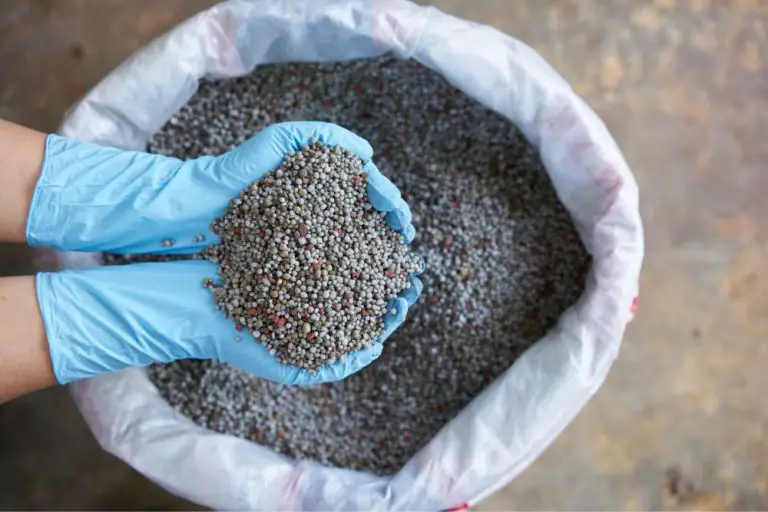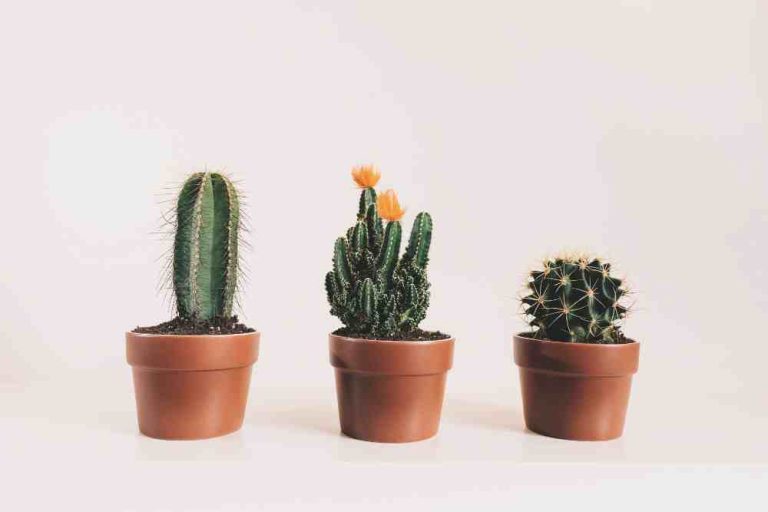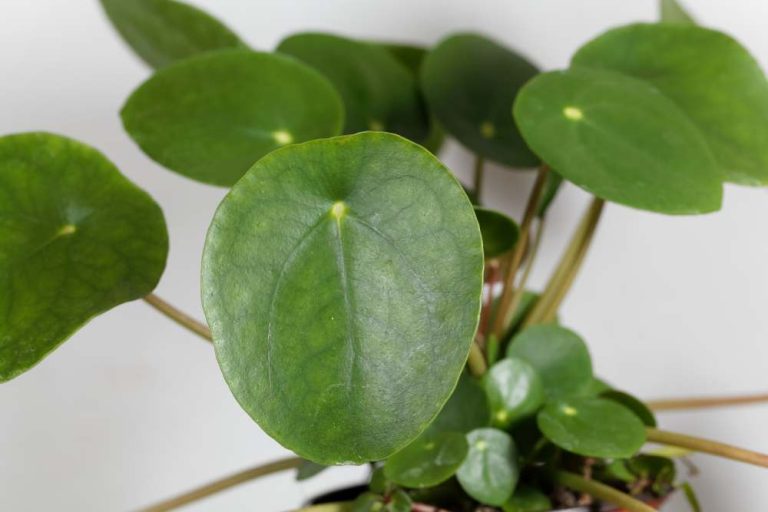10 Best Homemade Fertilizer For Pothos 2024: A Complete Guide
Pothos is a popular indoor plant due to its ease of maintenance. It can grow in practically any potting soil, but it performs best in a mixture rich in organic materials. Pothos will flourish in various lighting situations, including dim indirect and bright direct light.
Pothos doesn’t have many fertilizer requirements. Throughout the growing season, a general-purpose fertilizer used a few times per week will do. However, if you really want your pothos to flourish, you can use fertilizer made especially for foliage plants. To avoid overfertilizing and harming your plant, be sure to adhere to the fertilizer’s label’s instructions.
Which method is best for producing the best homemade fertilizer for pothos plants? We’ll recommend a different kind of readily available fertilizer, or you can make it yourself. The absence of hazardous chemicals in homemade fertilizer is its best feature. So get your green thumb ready for action by learning about the most popular homemade organic fertilizers for pothos plants.
Your plant will require necessary micronutrients like iron, copper, zinc, manganese, and boron and other macronutrients like calcium, sulfur, and magnesium that support plant growth. Therefore, always apply a balanced fertilizer to guarantee that your pothos receives all the necessary nutrients. The amount of nitrogen (N), phosphorous (P), and potassium (K) in the fertilizer, as well as its N-P-K ratio, should be specified on the product label.
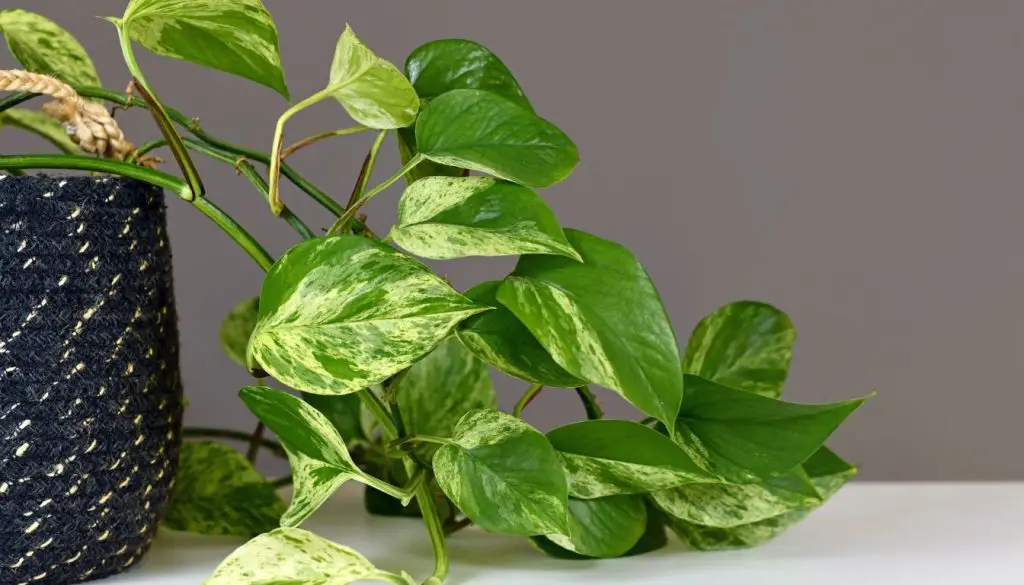
Fertilize your pothos using a balanced fertilizer once a month to promote fast growth and good health. For this plant, you can use various fertilizer types, whether synthetic or organic, commercially available or homemade.
You can improve your plant’s development and appearance by utilizing the appropriate kind of fertilizer. However, you must also modify the amount of fertilizer you give your pothos in accordance with the parameters of indoor growth to prevent mistakenly overfeeding your plant.
1. Aquarium Water Fertilizer
Your pothos will grow quickly and acquire a beautiful green color thanks to aquarium water’s phosphorus, ammonia, and other necessary minerals. It also features small helpers that maintain healthy soil and aid plants in absorbing more nutrients.
You should keep the used water when cleaning your fish tank. Allow it to sit for an hour so that the dirt will sink to the bottom. Afterward, carefully pour the clean water from the top into a jug, being careful not to get any dirt in it. Give your Pothos plants this nutrient-rich water every one to two weeks. Based on how your plant grows, adjust how frequently you do this.
2. 1 Cup Water + 1/2 Cup Fish Emulsion + 1/2 Cup Kelp Meal or Seaweed Extract + 1 Tablespoon Molasses or Honey
One water cup of Fish emulsion in a 1/2 Seaweed extract or half a cup of kelp meal and 1 tablespoon of honey or molasses. Mix the ingredients thoroughly by shaking or stirring them together.
Then Fill a clean spray bottle halfway with the mixture and apply it to your pothos plants every two weeks or as needed. Fish emulsion and kelp meal are great suppliers of nitrogen, phosphorous, and potassium, essential minerals supporting healthy plant growth. Plant health is further aided by using molasses or honey, which promote beneficial microbial activity in the soil.
3. Eggshell + Banana Peels + Potato And Onion Peeler + Used Tea Leave
Make sure used tea leaves don’t contain milk or sugar. Next, wash the eggshells in water thoroughly to remove any membrane that may have remained on them. Afterward, using your hands, break the eggshells into small pieces. It needs to be completely dried. Next, chop the potato, onion, and banana peels into small pieces. Let them dry in the sun for two weeks while covered in used tea leaves.
Finally, try it out after doing all five of these things. In a mixer grinder, combine it. Give it power. It is effective on many different plants. The best part is that you can use the products you manufacture for as long as you like. For example, you can use 1/2 tsp of this mixer in 1 liter of water.
4. Banana Peel Foliar Spray Fertilizer
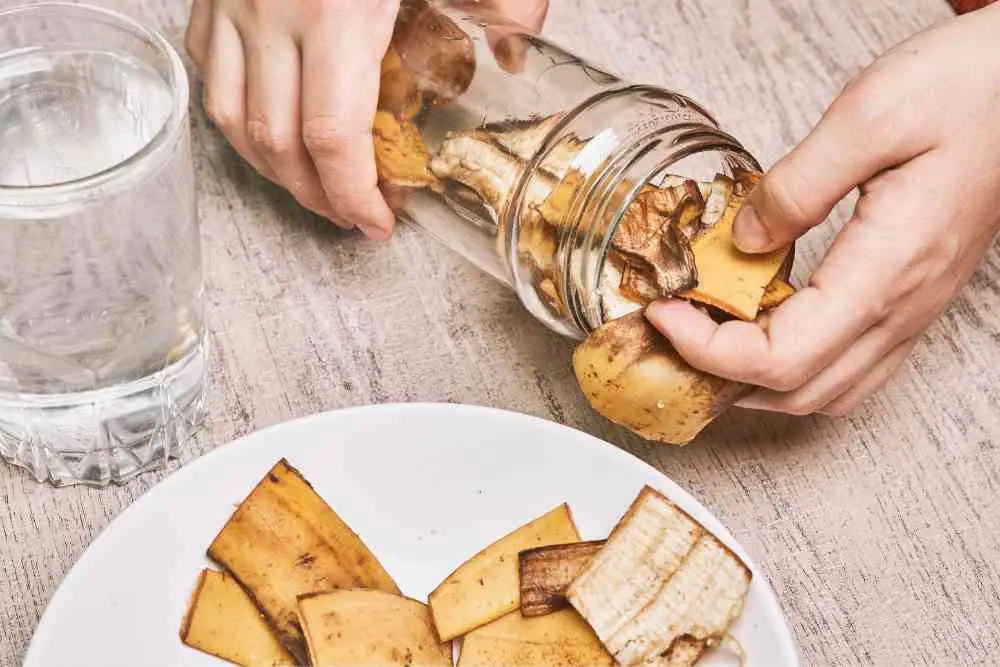
Pothos, which need potassium to grow healthily, can be found in large quantities in banana peels. Your plants will look vibrant and colorful if you feed them powdered dried banana peel since it provides the required food.
Use these homemade fertilizers to aid your pothos plants in growing in a sustainable, earth-friendly manner. Your plants will belove the organic, nutrient-rich assistance, and you’ll produce less trash using items you already have.
For a few days, dry some banana peels. Then, ground them into a fine powder using a blender or a coffee grinder. Next, combine 1 gallon of water in a spray bottle with 1-2 teaspoons of the powdered banana peel. Once a month, spray your plants with this mixture.
5. Gelatin
The pothos develops a lush growth over time thanks to the nitrogen-rich benefits of unflavored gelatin. But remember that it takes time and consistent use to do its magic! 1 cup of unflavored gelatin should be dissolved in 1 cup of boiling water.
Then, after the mixture has reached room temperature once a month, add 6 to 10 cups of cold water and apply it straight to the soil. Adding chopped banana peels will also boost effectiveness.
6. Cow Dung Mixture
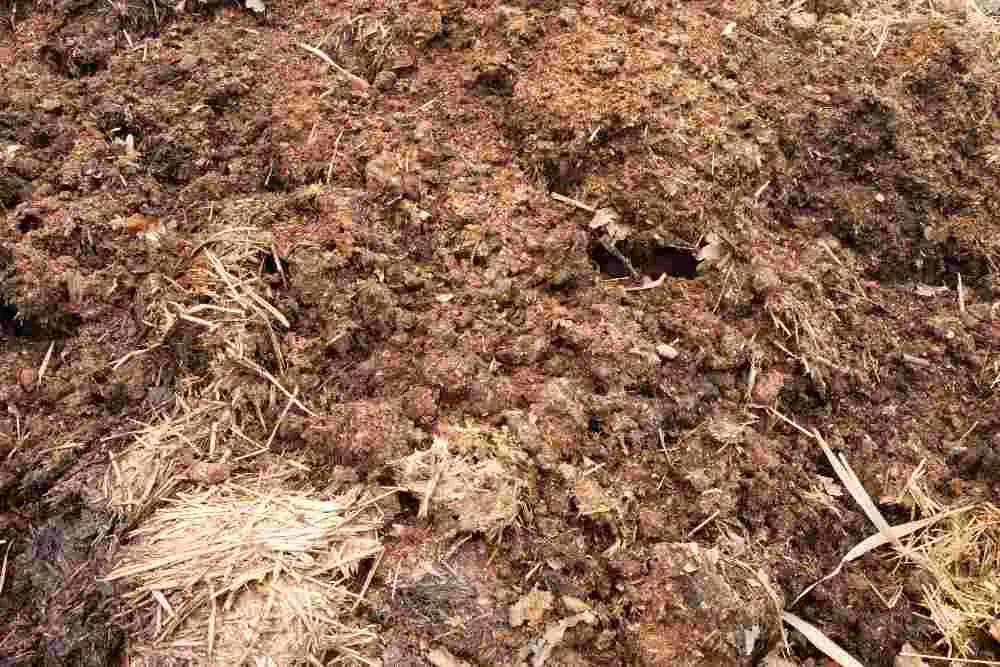
Cow dung is an excellent alternative fertilizer for pothos. Your pothos plant will benefit greatly from a mixture of cow manure. Nitrogen is one of the many essential nutrients found in cow manure. Its balanced structure makes it an excellent all-purpose fertilizer. To create fertilizer from cow manure, 5 glasses of water should be added to 1 cup of cow dung. Seal the bowl completely to prevent the mixture from coming in contact with the air.
The same ratio of vermicompost can also be used instead of cow dung. Finally, after 24 hours, you will have a fantastic homemade fertilizer for your pothos plant. Cow Dung Cake can also be used if cow dung is not readily available where you live. If using cake, use two pecs of cake for 500ml of water. Additionally, you have to wait 48 hours before using it. Use At a ratio of 2:3, use this water-soluble fertilizer.
7. Compost
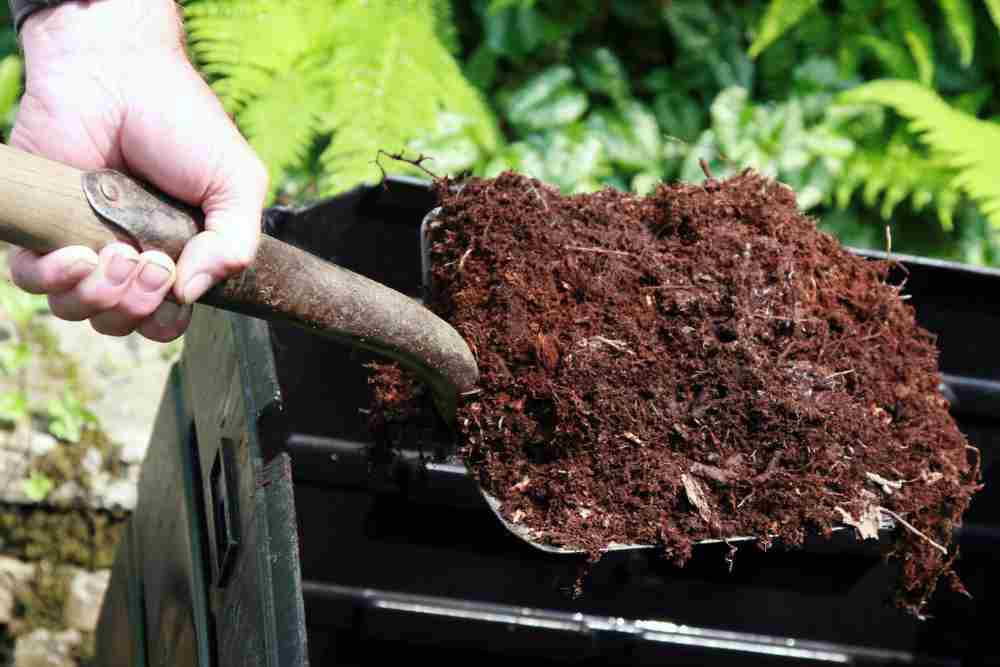
One of the finest ways to feed plants with fertilizer on a budget is by composting. To create a nutrient-rich soil amendment, organic waste is mixed with soil, water, and air during composting. This procedure can enhance nitrogen and essential nutrients in your plants. Compost can be created by you. Doing it is pretty simple. However, it doesn’t require much time or work.
What you’ll need is as follows: organic stuff (from your backyard or purchased at a garden store), such as eggshells, food scraps, and leaves; an earth water bin for compost. Composting is best started by mixing your organic waste with about an inch of soil. Next, mix everything with water, just enough to cover the organic stuff.
Once the mixture has formed a layer on top that is dark brown or black, turn the mixture every few days to accelerate the composting process. It can be fermented for around six months while adding more organic components. Next, combine this compost with 1 teaspoon of 1 liter of water. This method is not practical if you only have a small number of plants.
8. Eggshells Mixture With Water

When making homemade fertilizer for indoor plants in water, eggshells, and water are one of the first ingredients that come to mind. You can provide vital nutrients and promote growth by mixing eggshells into your plant’s soil.
It is simple to prepare at home with no effort required. This is the ideal organic fertilizer to use on your plants. Start by collecting five or six eggshells. You must now carefully wash them in water to remove any membrane that might have remained on them. Then, using a mixer, crush the eggshells into small pieces before adding them to a 1.5-liter bowl or glass of water.
Eggshells and water should be combined until the mixture turns somewhat white. Then, keep the bowl or glass in a cold, dry place for five or six days. You can use your homemade fertilizer for your plants in the water after five or six days.
The eggshells’ high nutrient content will make them the ideal fertilizer for your plant. The eggshell includes nutrients, including calcium (39.5%), nitrogen (0.4%), and magnesium (0.38%), among others. For best results, combine 50/50 eggshells and fresh water in the plant’s container and replace the water every two weeks.
9. Epsom Salt Fertilizer
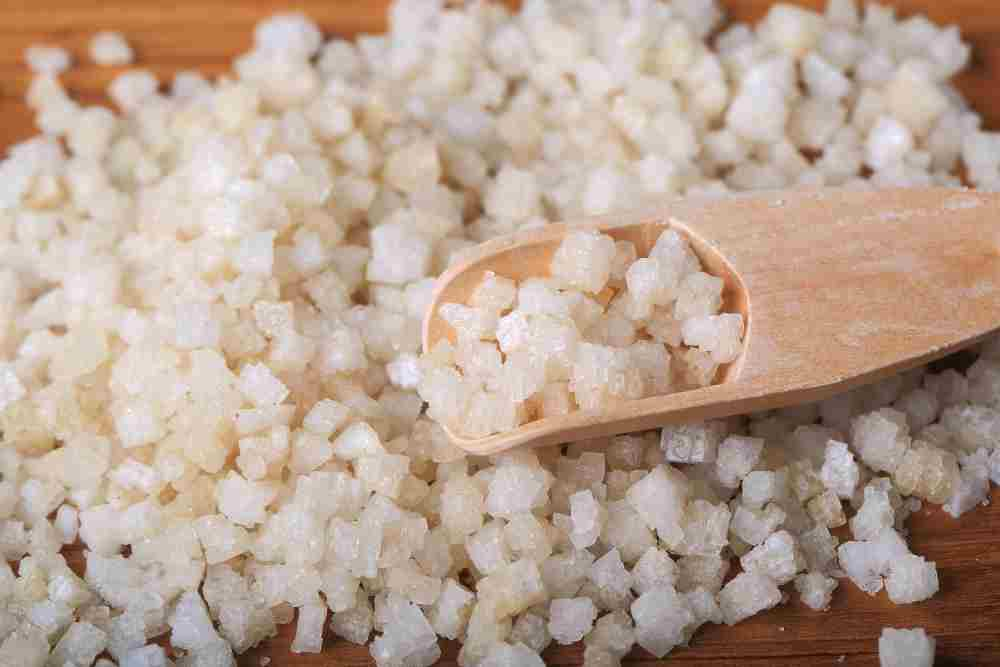
Magnesium and sulfur are nutrients in Epsom salt that plants require to develop and produce green food. Magnesium makes your pothos plants greener and fuller by assisting them in absorbing food and retaining water. Additionally, Epsom salt promotes plant leaf growth and shields plants from pests and disease.
Fill a spray bottle with 1 gallon of water and 1-2 tablespoons of Epsom salt. Then, once or twice a month, spray it on your plant.
10. Worm Compost Tea Fertilizer

Worm compost tea is a healthy, earth-friendly technique to help your pothos grow strong and produce greener leaves and larger stems. In addition, worm castings give the soil little aids that improve its quality and increase its capacity to support plant growth.
Place worm compost in a mesh or cloth bag then knots the bag shut. In a bucket with 2 gallons of water, place the bag. Overnight soaking will allow the food and water to combine. The water is ready to use when it turns a light brown color. Depending on your plants’ demands, give your pothos this rich tea every three to four weeks.
How Often To Fertilize
It is advised to fertilize your pothos every 4 to 6 weeks during the growing season because their growth will be slowed if they run out of nutrients. Because pothos grows so quickly, fertilizing is essential because, as was already mentioned, they require the right balance of nutrients.
Remember that pothos are kept indoors, unlike their outdoor counterparts, and cannot access the same natural resources as outside plants. Fertilizing is essential because pothos quickly use up all their soil’s nutrients. After the nutrients from their soil have been drained, pothos depends on us to ensure they are given the proper nutrients. Fertilizer enables the soil to restock nutrients so the pothos can keep consuming them.
What Types Of Fertilizers To Avoid?
Coffee Grounds – For many plants, coffee grounds can be an excellent soil additive, but not for pothos. Coffee grounds can quickly alter the pH of your soil. Pothos loves a pH range of 6.1-6.8, which you can change by adding coffee grounds.
Urea – Urea is a nitrogen-rich fertilizer that can stress indoor plants and potentially result in leaf burn. However, when it comes to your pothos, urea should be avoided since it is typically utilized on outside crops.
Over Fertilizing Signs
A few other symptoms of an over-fertilized pothos include:
- Leaves that have wilted
- Yellow leaves
- Tips of browning leaves
- Fertilizer residue on the soil’s surface
- Roots that have turned black and are limp
- 20+ Chic Boho Bedroom Ideas for a Cozy and Stylish Retreat - June 20, 2024
- 12+ Modern Boho Living Room Ideas to Create a Unique Oasis - June 10, 2024
- 10 Stunning Canopy Bed Ideas for a Dreamy Escape - May 16, 2024





